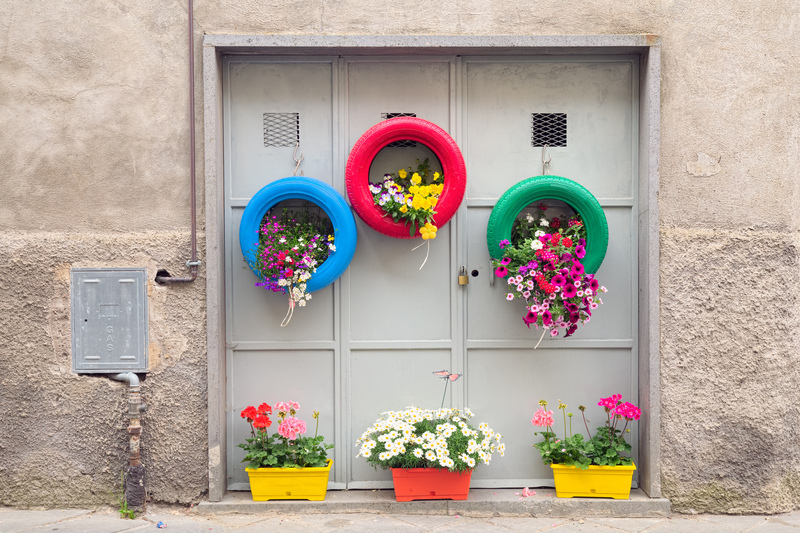Discover the Wonders of Recycling Glass
Recycling is a term we're all familiar with, but when it comes to glass recycling, there is an abundance of fascinating insights that might surprise even the most eco-conscious among us. Not only does recycling glass have a significant impact on the environment, but it also brings numerous benefits to the economy and our daily lives.
The Importance of Recycling Glass
The marvels of recycling glass extend beyond preservation and reuse. Glass, being a fully recyclable material, can be recycled endlessly without losing purity or quality. This makes glass recycling a crucial component in sustainable development.
Environmental Benefits
- Reduction in Waste: Glass recycling significantly reduces waste in landfills, extending their lifespan and minimizing environmental damage. By recycling, we prevent countless tons of glass from becoming waste each year.
- Energy Conservation: Manufacturing new glass requires substantial energy. However, recycled glass, also known as "cullet," melts at a lower temperature, thus reducing energy consumption by roughly 30%.
- Decrease in Pollution: Recycling glass reduces air and water pollution by about 20% and 50%, respectively, when compared to making new glass from raw materials. This reduction plays a crucial role in sustaining cleaner air and water.
Economic Advantages
The economic facets of glass recycling are just as compelling as the environmental ones:
- Job Creation: The recycling industry is a robust driver of employment. For instance, recycling facilities, collection services, and producers of recycle-based products provide numerous jobs annually.
- Resource Efficiency: Recycling glass helps conserve valuable raw materials like sand, soda ash, and limestone. This conservation effort allows producers to manage resources more sustainably for the long term.

How Does Glass Recycling Work?
Understanding the glass recycling process can enrich our appreciation for its impact. Here's a step-by-step guide to how glass is recycled:
Collection and Transportation
Recycling begins with the collection of glass from households, businesses, and recycling centers. Specialized vehicles then transport the glass to processing facilities where it undergoes sorting and cleaning.
Sorting and Cleaning
At the processing facility, glass is sorted by color (clear, brown, and green) since different colors have different chemical properties. After sorting, the glass is cleaned to remove impurities like labels and lids, ensuring the integrity of the recycling process.
Crushing and Melting
The cleaned glass is crushed into small pieces called cullet. Cullet is then mixed with raw materials (if necessary) and melted in furnaces. This crucial stage uses significantly less energy compared to manufacturing glass from scratch.
Forming New Products
Once melted, the molten glass is molded into new products, such as bottles and jars. These items are then cooled and transported to be filled, sold, and used, completing the recycling loop.
Innovative Products from Recycled Glass
The versatility of recycled glass extends beyond traditional bottling applications. Let's explore some innovative uses:
Eco-Friendly Construction Materials
In the construction industry, recycled glass can be transformed into materials like glassphalt (a mixture of glass and asphalt) for road surfaces. Additionally, glass bricks and tiles not only offer aesthetic appeal but also enhance energy efficiency in buildings.
Decorative and Artistic Items
Artists and craftsmen utilize recycled glass to create stunning decorative items and art pieces. From colorful mosaics to elegant jewelry, recycled glass provides a medium for sustainable creativity.
Challenges of Recycling Glass
While the benefits of glass recycling are substantial, the process is not without its challenges:
- Contamination: Foreign materials, such as ceramics and plastics, can contaminate glass recycling streams, posing significant challenges at processing facilities.
- Transportation Costs: Transporting glass can be cost-prohibitive due to its weight and volume, impacting the economic feasibility of glass recycling in certain regions.
- Infrastructure: Not all areas have established infrastructure for efficient glass recycling, which can limit accessibility and participation.

How You Can Contribute
Your role in the glass recycling process is vital. Here's how you can help:
- Participate Actively: Use recycling bins for glass whenever possible. Encourage friends and family to do the same, fostering a community of sustainability.
- Stay Informed: Keep updated on local recycling guidelines to ensure proper sorting and preparation of your glass waste.
- Support Legislation: Advocate for policies and programs that promote glass recycling, such as bottle deposit return systems and curbside collection initiatives.
Conclusion: Embracing a Sustainable Future with Glass Recycling
In conclusion, the wonders of glass recycling demonstrate a profound capacity to positively impact the environment, economy, and our collective future. By understanding and participating in the process, each of us can contribute to a world that values resource conservation and sustainability.
Together, we can ensure that glass recycling remains an integral part of our journey toward a more sustainable and environmentally friendly world.